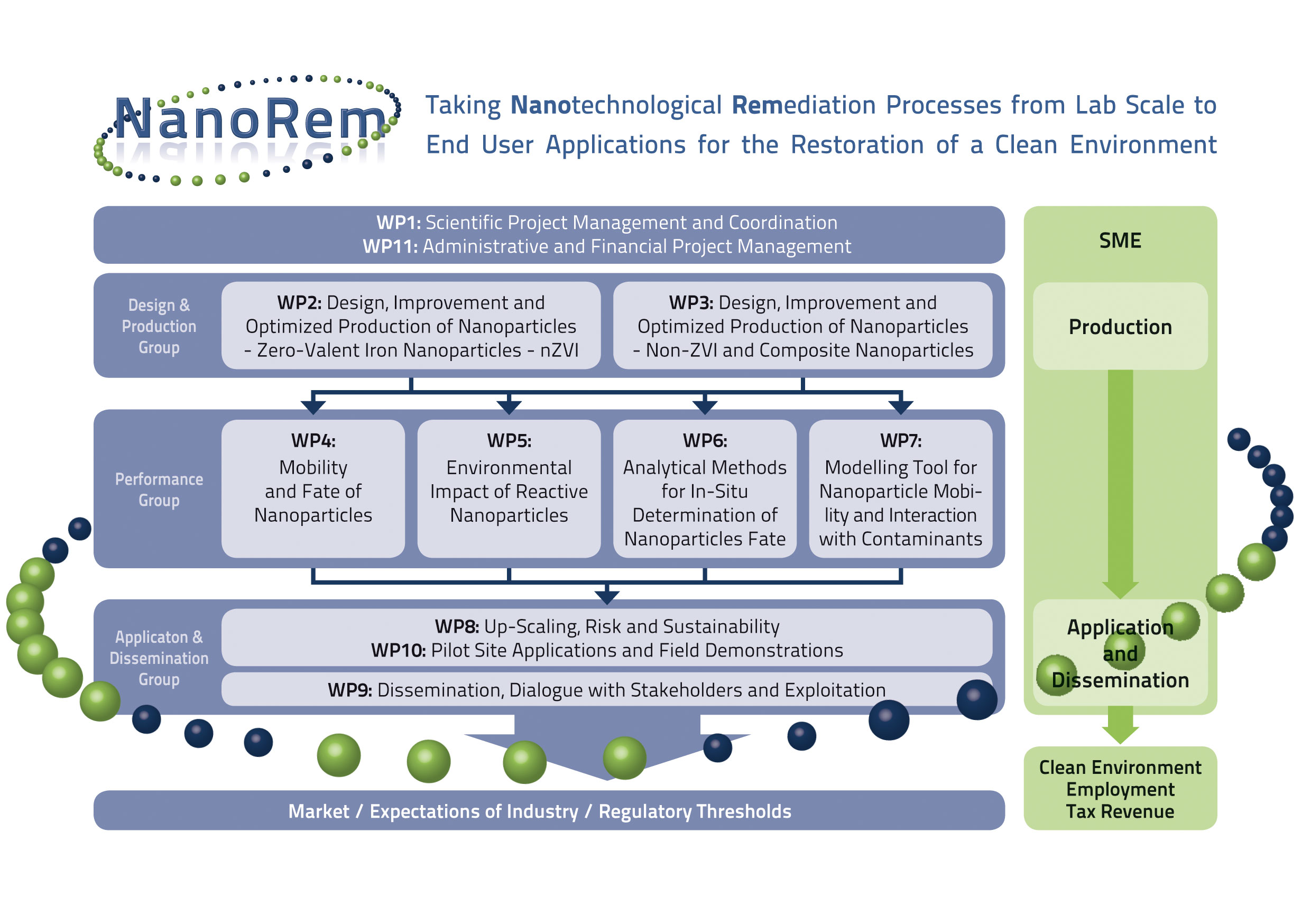| The goal of the NanoRem project is to show that the application of NPs is a practical and reliable method for the treatment of contaminated soil and groundwater. NanoRem will provide a direct link between SME on the production side and SME on the application side of groundwater remediation using NPs. The Figure below depicts the overall strategy to achieve this goal: Eight work packages (WP2 – WP9) are arranged in three functional groups. Click on the figure for more information about each work package.

NanoRem Project Structure, click diagram for more information on each Work Package
NanoRems’s scientific and technical approach, comprising the development of key technologies with the application and large scale implementation of the most promising processes in real world field experiments (For simplicity, feedback between WPs is not shown).
The Design, Improvement, and Production Group is shared by two WPs (WP2 & WP3) to facilitate the intense focus on different NPs and their corresponding production and application strengths. WP2 focuses on zero-valent iron NPs (nZVI), a particle that has been shown to chemically reduce chlorinated hydrocarbons (CHC) and immobilize heavy metals. In WP3 composite particles, which in addition to chemical reduction also offer oxidation of contaminants or sorption of the contaminants to particles, and ferric iron oxyhydroxide NPs which enhance microbial degradation, are produced and investigated.
The Performance Group is designated to bridge the gap from production to application: WP4 – WP7 work closely interlinked to ascertain potentials and limitations of NPs and to extend the limits of economic and ecological NP application. Mobility and fate of NPs have to be designed such that a maximum domain of aquifer may be remediated in a reasonable timeframe without the release or harmful metabolites or renegade NPs that undesirably leave the intended domain of remediation activity (WP4). Possible harmful effects of metabolites and renegades have to be understood and evaluated (WP5) and the beneficial (but also the perhaps detrimental) distribution of NPs in the aquifer need to be ascertained (WP6). A numerical model will be able to predict the usable distribution of particles and their reaction kinetics to assist field application (WP7).
The Application and Dissemination Group is responsible for successfully transferring the technology to the end-user. This includes the upscaling of the technology and the proof of concept in large scale indoor experiments (WP8) and the demonstration of the new technology at a number of demonstration sites with varying hydrogeological and contaminant situations (WP10). In combination with risk assessment, sustainability and lifecycle assessment considerations (WP8 & WP9), the obtained results will be used by WP9 to successfully disseminate the results and provide an exploitation strategy.
The overall management and coordination is provided by WP1 & WP11.
|